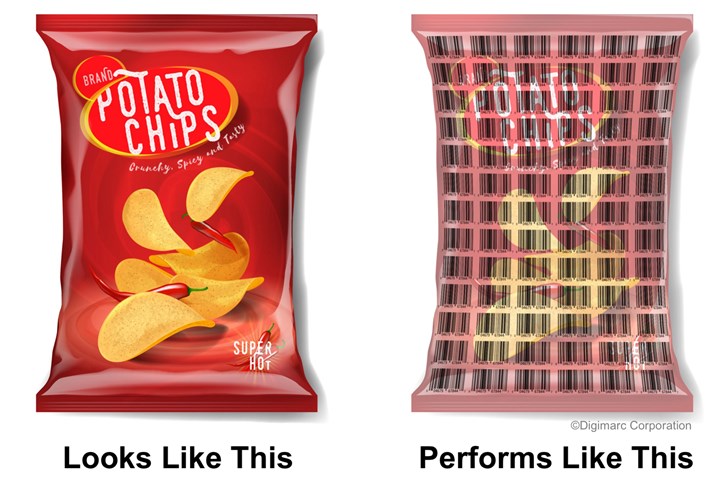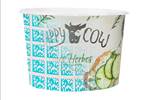Canadian Project Shows Digital Watermarks Aid Sortation of Flexible Packaging
First North American demo of “invisible” digital watermarks for mixed-waste plastics sortation proves the technology’s effectiveness with films and flexibles.
Share

Covert digital watermark technology from Digimarc was shown in a Canadian pilot project to improve sortation of flexible packaging in mixed waste. (Photo: Digimark Corp.)
A pilot project in Canada demonstrated that “covert digital watermarks” (almost imperceptible to the naked eye) can dramatically improve sortation of films and flexible packaging, which cannot be handled effectively by conventional optical sortation technology. That’s the report from , Beaverton, Ore., which worked with Canada’s Circular Plastics Taskforce (CPT), participating converters and , a French producer of intelligent optical sorting equipment and connected services (U.S. office in N.Y.C.). Accuracy of detection and sorting was 99% for films and flexibles constituting a mixed-waste sample that is “characteristic of Canadian conditions,” according to Digimarc. “Remarkably, the results show consistent behavior no matter the type of material used, the form factor or the type of commingled waste.” Starting next year, CPT aims to implement the technology in Canadian separation facilities.
Digimarc Recycle technology involving covert digital watermarks either printed on packaging or molded into the surface of rigid plastics has been used in large-scale sorting assessments over the past year, most notably as part of the HolyGrail 2.0 cross-industry initiative in Europe driven by AIM—European Brands Association and the Alliance to End Plastic Waste. The Canadian project was the first in North America. Using Digimarc Recycle technology, the covert digital watermarks can be read by a suitably programmed optical scanner that is interfaced with a cloud-based repository of product attributes such s brand, SKU, product variant, packaging composition, food/nonfood use, etc. The same information can be used to provide product-specific and location-based disposal instructions from the brand owner directly to consumers. Scannable data in the digital watermarks also can provide a comprehensive view of the post-purchase product journey for Producer Responsibility initiatives.
Related Content
-
How to Extrusion Blow Mold PHA/PLA Blends
You need to pay attention to the inherent characteristics of biopolymers PHA/PLA materials when setting process parameters to realize better and more consistent outcomes.
-
Multilayer Solutions to Challenges in Blow Molding with PCR
For extrusion blow molders, challenges of price and availability of postconsumer recycled resins can be addressed with a variety of multilayer technologies, which also offer solutions to issues with color, processability, mechanical properties and chemical migration in PCR materials.
-
Flexible-Film Processor Optimizes All-PE Food Packaging
Tobe Packaging’s breakthrough was to create its Ecolefin PE multilayer film that could be applied with a specialized barrier coating.



